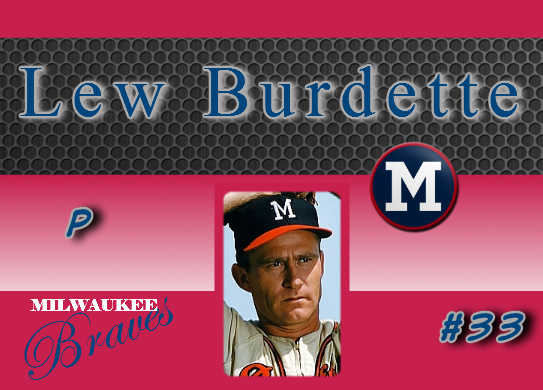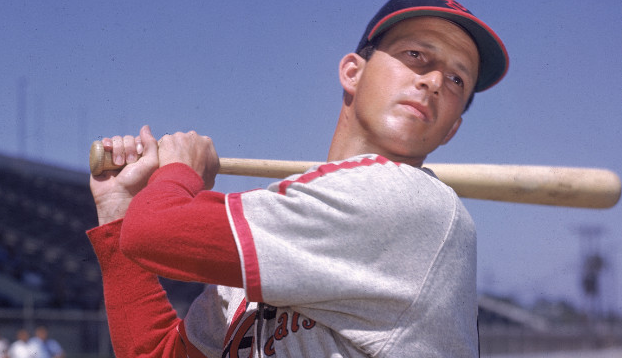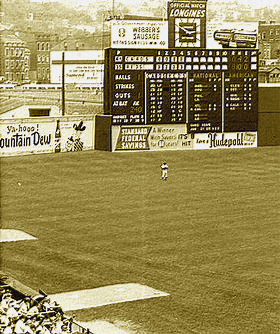 This is the second installment of my selecting All-Decade teams for the Reds for the last half of the 20th Century. Here is the link to the fifties’ decade team.
This is the second installment of my selecting All-Decade teams for the Reds for the last half of the 20th Century. Here is the link to the fifties’ decade team.
The sixties was a better time to be a Reds fan than the previous decade. The Reds went to the World Series in ’61 and were blown out in five games by the New York Yankees. That was the year that Roger Maris hit 61 HR and Mickey Mantle added 54. What a year for home runs!
In ’62 the first of the expansions came and the National League went from eight to 10 teams. The New York Mets and the Houston Colt 45’s were added and the league stayed that way until the regional divisions were established. The Reds were thrown into the National League’s West Division, where they finished third in their inaugural season there.
It was also the last decade the Reds would play in Crosley Field. They would make the move to the cookie cutter ballpark, known as Riverfront Stadium in 1970. During the sixties the Reds record was 860 up and 742 down. They only had two losing seasons although they didn’t return to the postseason after the ’61 pennant-winning season.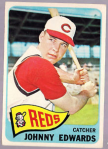
Now let us move on to the All-Decade team. We will begin behind the plate.
The catcher of the decade was Johnny Edwards. He played in seven of the 10 seasons and although he shared the decade with Hall of Famer Johnny Bench, the latter only played three seasons. I am sure he will make up for it in the seventies (wink, wink). Edwards represented the Queen City well as he went to the All-Star game in ’63,’64 and ’65 and won two Gold Gloves. Edwards was traded to the St. Louis Cardinals prior to the ’68 season for Pat Corrales and Jimy Williams.
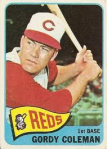 At first base the first person who probably rings a bell for you is Tony Perez. In this decade he was with the Reds from ’64-’69. Had he played all of his games, or even most of them, he would probably be the first baseman. He is not. That honor goes to the late Gordy Coleman, one of my favorite players of that time. Coleman played with the Reds from 1960-67. In 1961-62 he averaged 31 HR and 98 RBI per 162 games.
At first base the first person who probably rings a bell for you is Tony Perez. In this decade he was with the Reds from ’64-’69. Had he played all of his games, or even most of them, he would probably be the first baseman. He is not. That honor goes to the late Gordy Coleman, one of my favorite players of that time. Coleman played with the Reds from 1960-67. In 1961-62 he averaged 31 HR and 98 RBI per 162 games.
In 1963 we saw the emergence of the future hits leader in MLB, Pete Rose. He began his career on a high note winning the 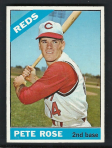 Rookie-of-the-Year award at second base. Although he played several different positions during this decade, most of the time was at 2B. From ’63-’69 Rose had 200+ hits four of the seven campaigns. He was a four-time All-Star during the sixties and he finished second in MVP voting in 1968 and fourth in ’69, and won one Gold Glove.
Rookie-of-the-Year award at second base. Although he played several different positions during this decade, most of the time was at 2B. From ’63-’69 Rose had 200+ hits four of the seven campaigns. He was a four-time All-Star during the sixties and he finished second in MVP voting in 1968 and fourth in ’69, and won one Gold Glove.
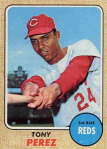
Tony Perez played for Cincinnati from ’64-’69. He was on three All-Star squads and from ’67-’69. Perez averaged 28 HR and 108 RBI. Perez played mostly at 3B during this decade however he did spend some time at first.
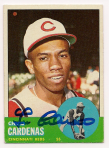
The shortstop of the decade goes to Leo Cardenas. He played with the Reds from ’60-’68 at which time he was traded to the Twins for left-hander Jim Merritt. Cardenas was an All-Star for four years and won a Gold Glove. In 1964 he led the National League by playing in 163 games.
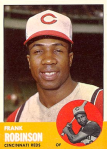 In the outfield I have one holdover from the previous decade. Frank Robinson stayed with the Reds until being traded prior to the ’66 season to the Baltimore Orioles for Milt Pappas, et al. Robby went on to promptly win the Triple Crown and become the first man to win the MVP award in the American and National Leagues. During the sixties with the Reds, he was a three-time All-Star and won one MVP award. He averaged 35 HR, 116 RBI and batted .306/.399/.562 and sported an OPS+ of 159.
In the outfield I have one holdover from the previous decade. Frank Robinson stayed with the Reds until being traded prior to the ’66 season to the Baltimore Orioles for Milt Pappas, et al. Robby went on to promptly win the Triple Crown and become the first man to win the MVP award in the American and National Leagues. During the sixties with the Reds, he was a three-time All-Star and won one MVP award. He averaged 35 HR, 116 RBI and batted .306/.399/.562 and sported an OPS+ of 159.
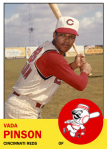
Vada Pinson who came on late in the fifties had a very good tenure with the Reds. He played there until being traded prior to the ’69 season to the Cardinals for Wayne Granger and Bobby Tolan. He was an All-Star in ’60 won a Gold Glove and finished third in MVP voting in ’61 behind winner, teammate Frank Robinson and Orlando Cepeda. From ’62-65 Pinson averaged 24 HR and 99 RBI. He had over 200 hits three different times and batted over .300 three times as well. In ’61 he batted .343/.379/.504. He also led the league in hits twice and in doubles twice.
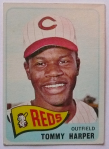
Tommy Harper is the third outfielder for the sixties. He began playing the hot corner but soon gravitated to the outfield. He came up with the Reds in ’62 and played until being traded to the Indians after the ’67 season. He led the league in runs scored with 126 in 1965.
Finally we come down to the ace of the decade. There were some very good pitchers wearing a Reds uniform in the sixties, 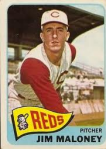 including Jim O’Toole, Bob Purkey, Joey Jay, Milt Pappas, etc. The one who overshadowed them all was Jim Maloney. He was an All-Star in 1965, was a 20+ game winner twice and still holds the franchise record for strikeouts with 1592 (1585 during the sixties). Malone threw two no-hitters in the sixties, one of them was a 10-inning job.
including Jim O’Toole, Bob Purkey, Joey Jay, Milt Pappas, etc. The one who overshadowed them all was Jim Maloney. He was an All-Star in 1965, was a 20+ game winner twice and still holds the franchise record for strikeouts with 1592 (1585 during the sixties). Malone threw two no-hitters in the sixties, one of them was a 10-inning job.
There you have it, the best of the Reds in the sixties.
|
YRS |
POS |
AB |
R |
H |
HR |
RBI |
SB |
BA |
OBP |
SLG |
OPS+ |
| J Edwards |
61-67 |
C |
2377 |
235 |
585 |
53 |
296 |
6 |
.246 |
.314 |
.370 |
87 |
| G Coleman |
60-67 |
1B |
2369 |
277 |
642 |
98 |
385 |
9 |
.271 |
.322 |
.447 |
106 |
| P Rose |
63-69 |
2B |
4301 |
679 |
1327 |
75 |
433 |
50 |
.309 |
.369 |
.436 |
123 |
| T Perez |
64-69 |
3B |
2417 |
340 |
678 |
97 |
403 |
8 |
.281 |
.333 |
.466 |
120 |
| L Cardenas |
60-68 |
SS |
4047 |
415 |
1058 |
72 |
413 |
26 |
.261 |
.313 |
.377 |
89 |
| F Robinson |
60-65 |
OF |
3250 |
628 |
993 |
190 |
643 |
115 |
.306 |
.399 |
.562 |
159 |
| V Pinson |
60-68 |
OF |
5591 |
827 |
1650 |
165 |
722 |
198 |
.295 |
.337 |
.466 |
118 |
| T Harper |
62-67 |
OF |
2312 |
376 |
589 |
44 |
177 |
124 |
.255 |
.333 |
.362 |
91 |
|
YRS |
POS |
W-L |
ERA |
G |
IP |
H |
BB |
SO |
ERA+ |
WHIP |
| J Maloney |
60-69 |
P |
134-80 |
3.08 |
282 |
1802 |
1457 |
771 |
1585 |
119 |
1.236 |


